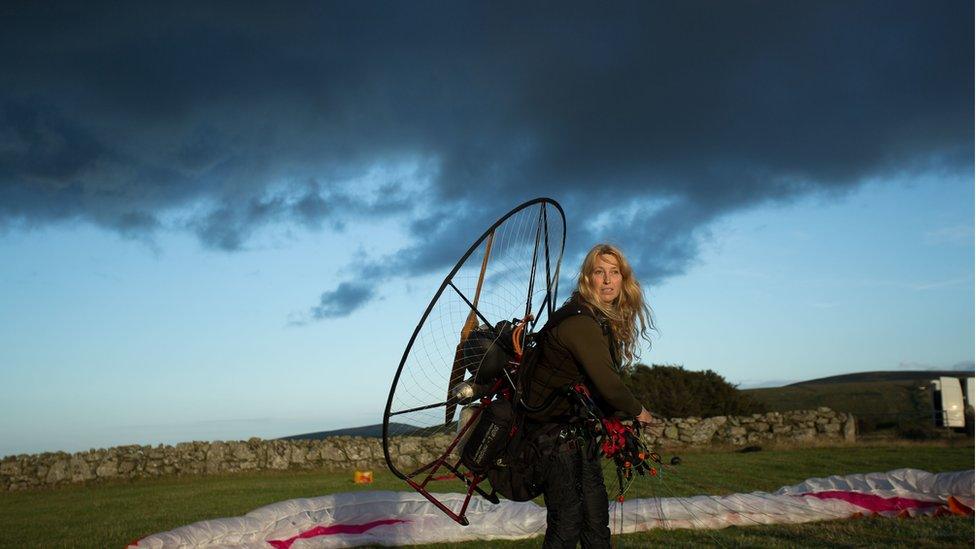Human swan Sacha Dench's next big adventure
- Published
- comments

Do you remember the human swan?
Sacha Dench travelled using a specially designed flying machine alongside Bewick swans as they migrated across Europe. The machine was made up of a parachute wing with a small propeller engine strapped to the back.
She joined the birds as they flew their annual 7,000km journey, from Russia to the UK.
Now, she has a new bird to follow - opsreys!
Flying like a swan
Ospreys were once common across Europe, but the bird was driven to extinction in many places - including Britain - in the 1800s.
Now, they have been reintroduced and thanks to conservation efforts are making a comeback in some places.
In Scotland, in particular, experts have had success by protecting nests and encouraging the public to support the birds.
From just one breeding pair in Scotland in the 1950s, there are now around 250 breeding pairs across the UK.
Why follow Ospreys?
Ospreys can travel up to 5,000 miles on their migrations to and from Scotland.
How they know the direction to go on the journey, and how young birds manage to make the journey on their own at such a young age, is still a mystery.
Ospreys are birds of prey, which eat mostly fish, diving for them from around 30m in the air - three times higher than an Olympic diving board!
Their wings can be almost two metres across
Female ospreys are bigger than males
They have a special transparent eyelid like a contact lens that protects their eyes underwater
Ospreys can travel up to 5,000 miles on their migrations to and from Scotland
Sacha plans to follow their migration from Scotland all the way to Ghana in west Africa.
She says she'll cross over 15 countries and cover almost 10,000km.
On her last swan mission, Sacha flew over lots of wetlands. But this time the challenges are huge mountain ranges and even the Sahara desert!
Sacha will have to cross the Sahara - one of the world's biggest deserts
On the way, she aims to help scientists to learn more about threats to the birds, such as habitat loss, plastics, pollution, climate change and persecution by people.
"The osprey is a magnificent bird and an impressive flyer," said Sacha and explained that she wants "to get inside the head of the animals we are trying to bring back, and try to see the world as they do".
She said she hopes this next adventure - and what she learns on it - will be "an eye-opener for scientists and conservationists".
Sacha's planning to set off in autumn 2020.
- Published5 December 2016
- Published22 September 2016
- Published16 August 2019
- Published31 December 2018
